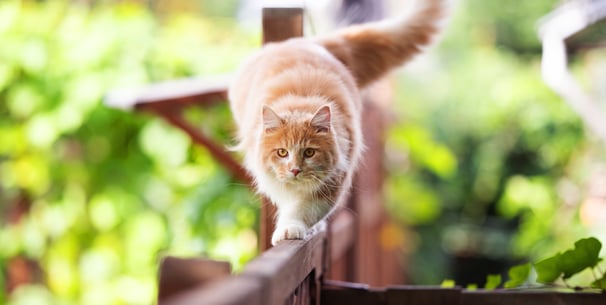Bald Patch on Your Cat? - Causes and Issues of Hair Loss and Alopecia in Cats
Index:



Introduction
Noticing a bald patch on your beloved cat can be tense and confusing.
You might worry if it’s a sign of a serious illness, a nasty parasite, or a challenging flea problem.
By understanding the common causes of fur loss and bald patches on your cat, you can stay calm and protect your fluffy friend’s health.
We’re here to guide you through the potential reasons (from flea treatment to an allergy) and offer suggestions for treatment options.
Together, let's help your cat’s hair grow back stronger than ever.
Key takeaways:
Hair loss in cats can be triggered by allergies, parasites, or infections.
Fungal infection that causes lesions on the skin, like ringworm, may lead to a cat losing fur.
Hormonal disorders (e.g., overactive thyroid in cats) can cause areas of fur loss.
Food allergies or dry skin may result in a bald spot.
Many cats recover with the right care—hair regrowth often follows prompt treatment.
Contact your vet if you suspect your cat is suffering from excessive hair loss.
Consider resources like Waggel Pet Insurance to help cover vet costs.

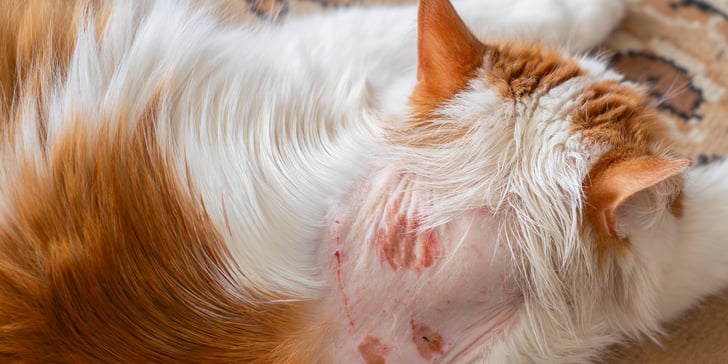

Why does a cat have bald patches?
Sometimes, cat owners will notice a bald patch on their pets almost overnight.
This can happen when cats have naturally thinning hair or when they lose their fur from constant licking.
It can be worrying to see your cat is losing hair, but the cause of bald patches might be straightforward.
Other common causes include flea bites, food allergies, or a fungal infection that causes itching.
In some cases, it’s not just one cause of bald patches.
An abscess could also be hidden under the cat's fur.
An infection that causes circular thinning of fur or circular lesions on the skin might suggest ringworm.
If you want a closer look at this, visit our in-depth guide on ringworm in cats.
Further potential causes of hair loss in cats
Loss of hair in your furry friend can be caused by many factors. For example, a parasite like fleas is often a common cause of bald spots.
Additionally, cat alopecia can stem from hormone imbalances, such as an overactive thyroid.
Have you ever heard about miliary dermatitis in cats? It’s an infection that causes small scabs and also leads to itchy skin in cats.
We also recommend this piece on identifying different forms of feline hair thinning. You’ll learn more about how hair loss usually starts and how hair will grow back once treatment begins.
Reactions to an allergen could also be a problem, leading them to scratch and groom excessively.
To learn more about different skin challenges, check out our article on cat skin conditions.
You’ll find helpful tips on identifying red, flaky patches and understanding how they link to hair loss in cats.
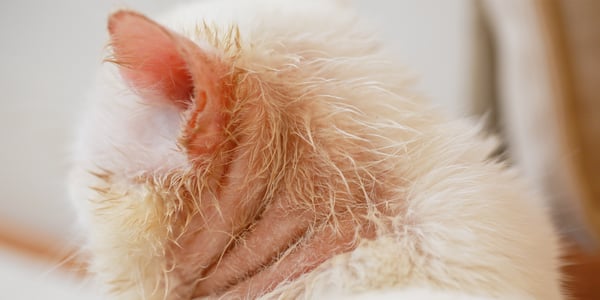


Quick guide to potential causes:

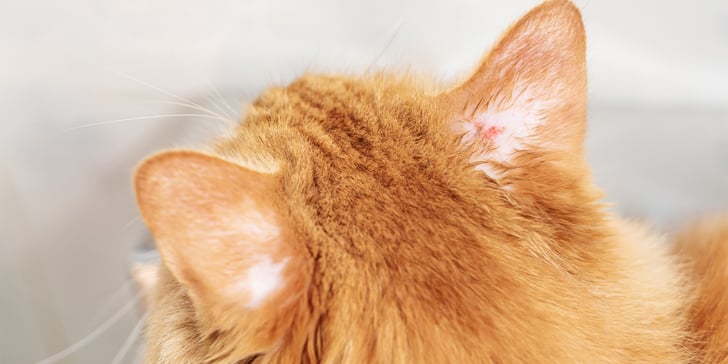

The link between allergies and fur loss
As mentioned, allergies are a common cause of hair loss in cats, whether it’s food allergies or environmental triggers.
This facet can appear if your cat is suffering from seasonal pollen sensitivities or reacting to a new household cleaning product.
If you want to explore the concept of dietary triggers, see our dedicated post on cat food allergies for more detailed insight.
Sometimes, a cat develops excessive hair loss by constantly scratching their bald areas.
Reducing exposure to the offender can stop any further hair loss and encourage a cat’s hair growth. Always contact your vet if symptoms persist or worsen.
When to suspect your cat needs medical attention
While cats have naturally thinning hair as they age, older cats might get patchy fur due to underlying issues such as an infection that causes intense itchiness.
If you notice your cat is in discomfort, losing appetite, or if the development of bald patches is rapid, it’s best to speak with a professional.

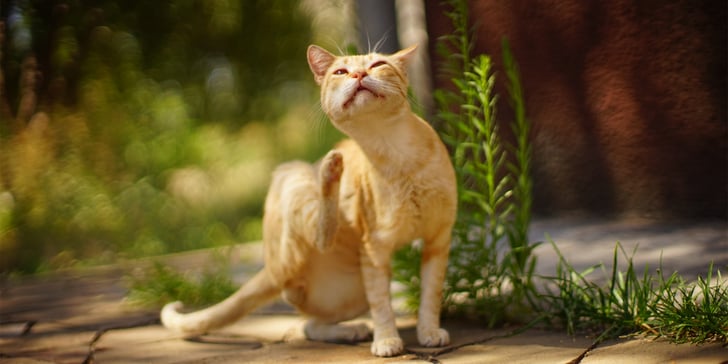

Treatment options include careful home care
Luckily, bald patches in cats can often be managed at home with treatment options such as medicated shampoos, changes in diet, and better hygiene routines.
If flea or parasite problems cause hair to fall out, your vet may recommend a thorough flea treatment schedule.
Remember, early detection can save you time and money—uncomfortable cats can sometimes require ongoing steroid treatment if the problem is chronic.
Quick care reduces the development of bald patches from over-grooming.
As a community of caring pet parents, we believe supporting one another with these tips helps us all.
Practical tips for cat owners
Keep a regular grooming schedule to spot early bald patches or new lumps.
Watch for signs of dry skin or loose hair around the tail and belly.
Feed balanced meals to prevent food allergies, focusing on top-quality ingredients.
Use flea treatment products to protect against parasite infestations.
Stay current with vet check-ups—especially for older cats to catch any early signs of cat alopecia.



How Waggel can help
Cat hair loss can be traumatic for the pet owner and the cat but with diagnostic tests, prescription meds, and follow-up visits, things tend to clear up in most cases. However all these treatments can add up in cost.
This is where Waggel Pet Insurance fits in. Having the right coverage gives you peace of mind—and helps ensure your cat’s fur loss gets the attention it deserves.
We’re in this together—keeping your cat happy and healthy is our shared passion.
If you’d like a broader look at what feline plans might cover, have a look at our cat insurance guide. We want you and your kitty to feel confident and protected at every stage of your journey together.
In the end, whether your cat develops a mild irritation or you’re seeing larger bald patches, remember that hair regrowth is often achievable with prompt care.
Ready to prioritise your cat’s health? Consider a policy with Waggel Pet Insurance to cover unexpected treatments.
Waggel Pet Insurance
Need more help? You're in luck if you're a Waggel Pet Insurance member. Along with our excellent coverage, we offer access to a 24/7 online vet to answer all your sticky questions, especially if you need grooming assistance.
Not a member? Why not get a quote now and cover your furry friend for a range of illnesses, all while enjoying our amazing perks and rewards.
Want more like this?
Get updates from us with helpful info, advice, answers to frequently asked questions and much more.
Index:
Related posts:
Get your quote
Along with our excellent coverage, we offer access to a 24/7 online vet to answer all your sticky questions.
